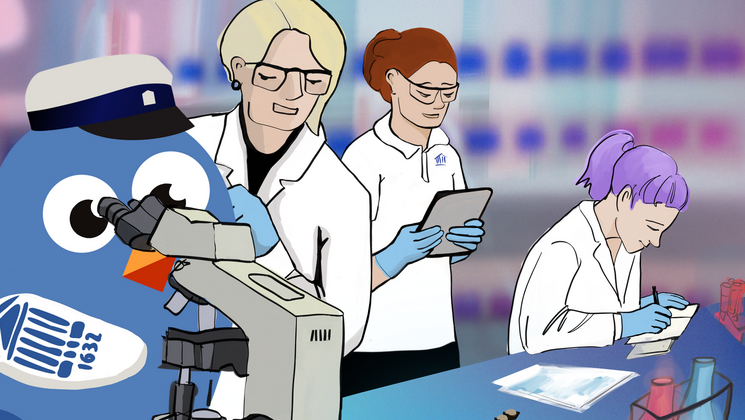Large genomic study on stroke informs drug discovery and risk prediction across ancestries

A large international collaborative study gathering >200,000 stroke patients and >2 million control individuals from five different ancestries identifies association signals for stroke and its subtypes at 89 (61 new) independent genetic loci. This study provides critical insight to inform future biological research into the pathogenesis of stroke and its subtypes. It reveals putative causal genes, highlighting F11, KLKB1, PROC, GP1BA, LAMC2 and VCAM1 as potential drug targets for intervention to prevent or treat stroke. Moreover, it provides genetic risk prediction tools for stroke, enhanced and validated for the first time in non-European ancestry populations, to inform precision prevention and precision drug development.
Stroke is the second leading cause of death worldwide, responsible for approximately 12% of total deaths, and a major contributor to years of life lost or lived with disability. The incidence and severity of stroke is particularly high in low- and middle-income countries where 70% of total stroke deaths occur. This makes it extremely important to adopt a global perspective in research efforts aimed at improving the prevention and treatment of stroke.
The results of the largest genomic study on stroke thus far were published online in the journal Nature. The study was based on DNA samples of more than 2.5 million participants of whom 200,000 had a stroke. Participants were of European, East-Asian, African, South-Asian, and Latin-American ancestry (a third of stroke patients were non-European). They were derived from numerous hospital-based and population-based cohorts and biobanks, as well as five clinical trials.
The study was conducted by members of the GIGASTROKE consortium, involving several international consortia and networks, such as ISGC and CHARGE, and investigators from over 20 countries. It was co-led by two research centers at the University of Bordeaux (France) and LMU University in Munich (Germany), together with research departments at Tokyo University (Japan), University of Tartu (Estonia), Ibadan University (Nigeria), the VA Boston Healthcare System and Harvard Medical School (USA).
– The contribution of study participants with diverse ancestry backgrounds has been of paramount importance, enhancing our ability to detect novel genetic associations, refining our understanding of their biological underpinnings, and enabling to improve transferability of polygenic risk prediction of stroke across continents, says Stephanie Debette, Professor of Epidemiology and Neurologist at University of Bordeaux, Inserm, and Bordeaux University Hospital, and director of the Bordeaux Population Health research center, one of the leaders of the current study.
– This study shows the power of genomics, combined with large publicly available resources on gene expression and protein levels, to inform drug discovery. Medications for two of the potential drug targets identified by the study are currently already examined in phase 2 clinical trials for primary or secondary stroke prevention, supporting the validity of the approach, says Martin Dichgans, Professor of Neurology and Director at the Institute for Stroke and Dementia Research (ISD), University Hospital, Ludwig-Maximilian-University (LMU) Munich, another leader of the study.
An initial genetic study was conducted in 1.6 million persons, of whom 110,182 had a stroke, and identified 89 regions (61 new) of the genome associated with stroke. These genomic regions were then examined in further 1.1 million persons, mostly from large biobanks, of whom 89,084 suffered a stroke, providing additional evidence for the vast majority of associations identified in the first analysis.
The researchers found substantial shared genetic susceptibility to stroke across the different ancestry groups, and the effects of identified genomic regions were mostly of similar magnitude across ancestries.
Characterized by a neurological deficit of sudden onset, stroke is predominantly caused by an ischemic stroke (where clotting of an artery occurs, and of which the main subtypes are related to atheroma, cardiac disease, and small-vessel disease) and, less often, by an intracerebral hemorrhage due to bleeding in the brain. Most of the associations observed in this study were with any stroke or any ischemic stroke, while some were specific for ischemic stroke subtypes.
By combining their results with existing data on gene expression in different tissues or brain cell types and protein levels in the blood, cerebrospinal fluid and brain, the researchers obtained preliminary insights into the specific genes involved and the biological mechanisms through which they may contribute to the occurrence of stroke.
– These findings will help translate basic research to the clinic and provide guidance to prioritize future experimental research efforts aimed at exploring possible novel drug targets for stroke comments Aniket Mishra, researchers at University of Bordeaux and Inserm (Bordeaux Population Health research center), first author of the study. The results also provide support for repositioning several drugs currently commercialized for other indications to prevent or treat stroke.
The researchers also aggregated all genetic risk factors for stroke from different ancestry groups into a polygenic score which evaluates the effect of thousands of genetic variants and found the score to be strongly associated with ischemic stroke risk in Europeans and, for the first time, in East Asians. There were not enough participants to generate an African-specific stroke polygenic score, however the European score showed a significant, although weaker, association with ischemic stroke in both African American and indigenous African participants. – This is entirely novel! says Lili Milani, head of the Estonian Genome Centre at University of Tartu, another lead senior author.
There were not enough participants to generate an African-specific stroke polygenic score, however the European score showed a significant, although weaker, association with ischemic stroke in both African American and indigenous African participants. – This is entirely novel!
Leveraging data from 5 clinical trials in 52,600 patients, the researchers further showed that, in combination, the identified genetic risk factors for stroke predicted ischemic stroke independently of clinical risk factors (hypertension, smoking, etc.) and much more strongly than in previous work based on smaller genetic datasets.
– This study represents an additional step towards precision prevention and drug development approaches for stroke, says Yoichiro Kamatani, director of the laboratory of complex trait genomics at the University of Tokyo, another leader of the study.
– Importantly, it also highlights the urgent need to substantially increase participant diversity in genomic studies, especially from the most under-represented regions such as Africa, to avoid exacerbation of health disparities in the era of precision medicine and precision public health, says Mayowa Owolabi, neurologist and director of the Center for Genomic and Precision Medicine, College of Medicine, University of Ibadan, another lead senior author.
This project has received funding from the European Union’s Horizon 2020 research and innovation programme under grant agreement No. 777107.






